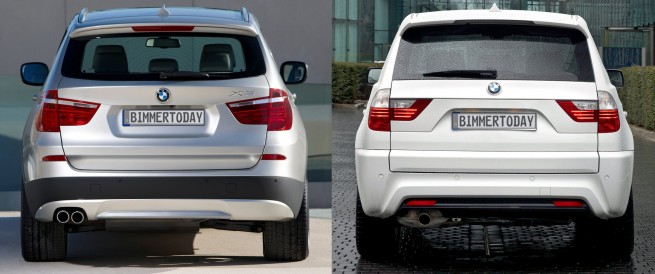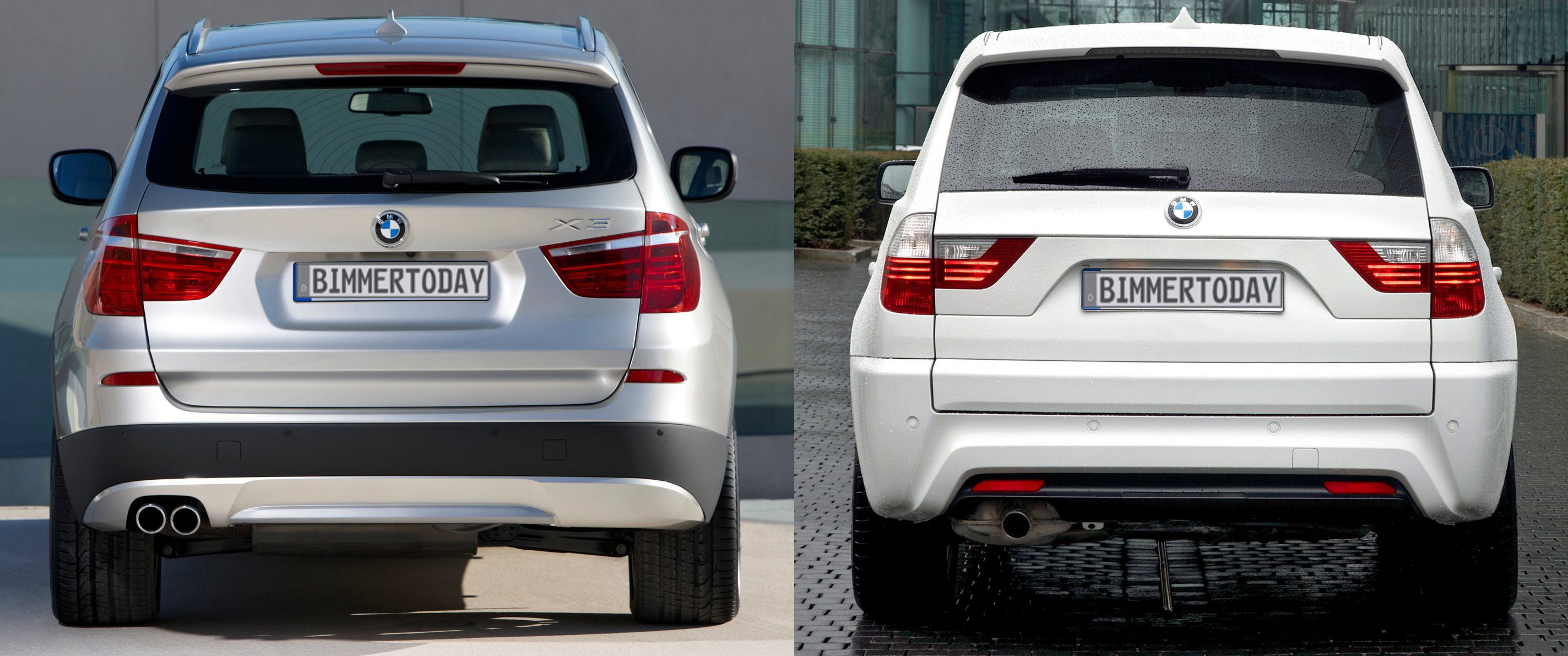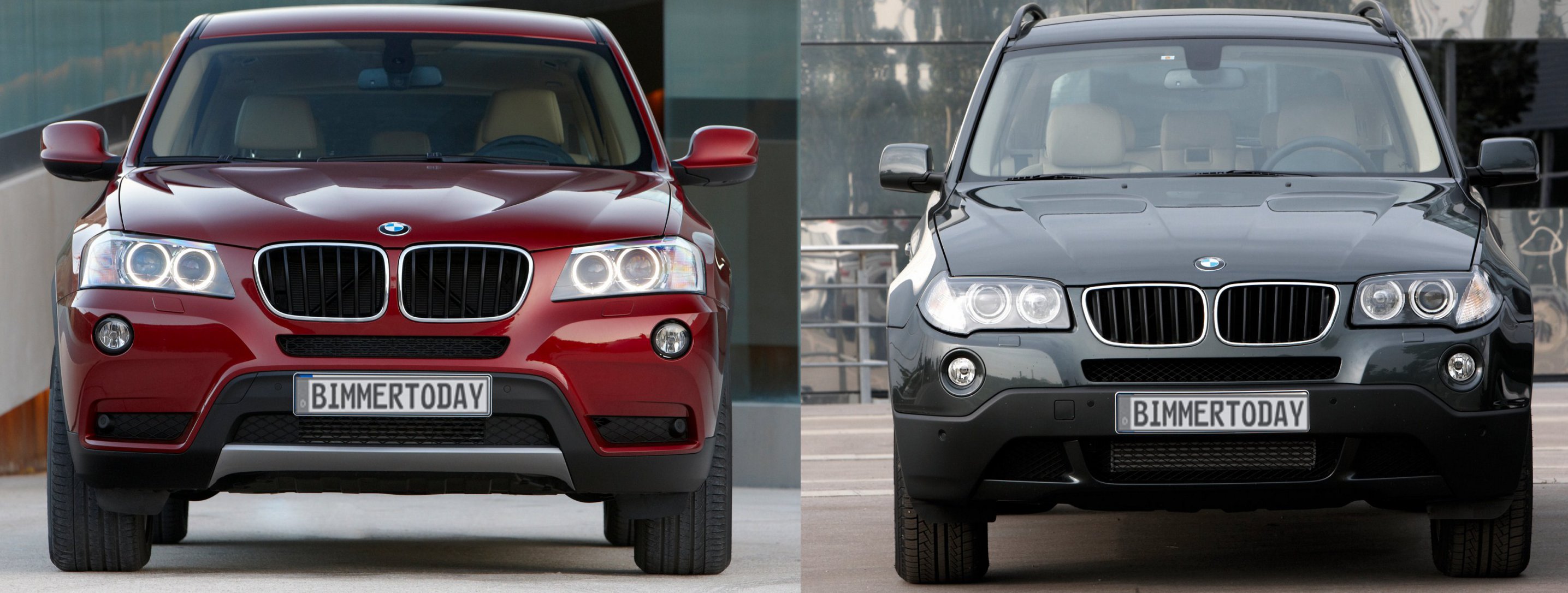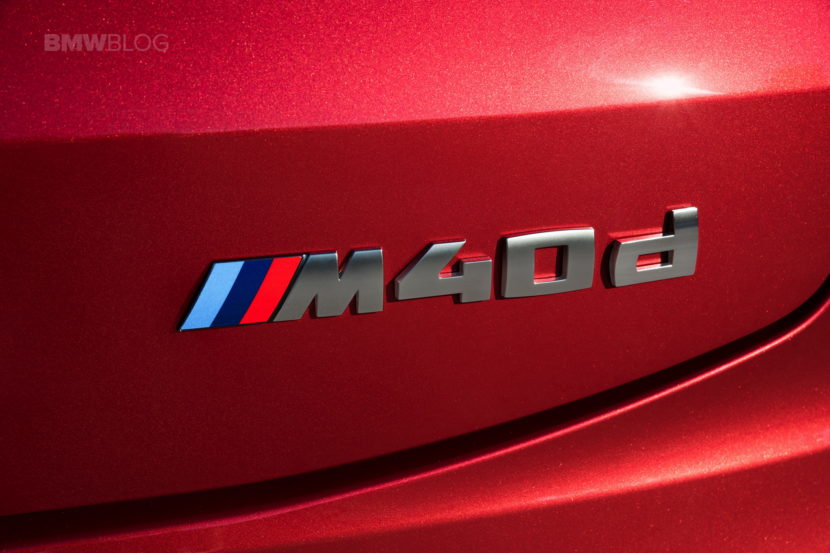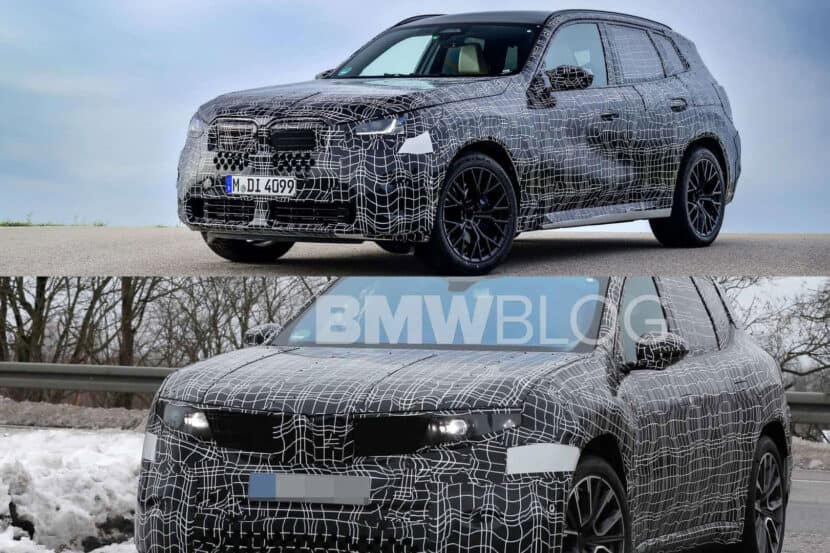The second generation BMW X3 was unveiled earlier this week and as expected, BMW opted for an evolutionary design of the midsize premium Sports Activity Vehicle. As with any new model, opinions are split, while some of the BMW consumers embraced the visual changes, and especially the technology features, there are others that voiced their opinion in a less positive way.
Our first comparison involved the top three most popular vehicles within the previously mentioned segment, the Audi Q5, Mercedes-Benz GLK, and of course, the X3. Again, somewhat expected on a BMW related website, the poll shows the new X3 as the winner, but the overall comments revealed a very close race with the Q5.
Moving away from the normal comparison among usual competitors, we decided to place the two X3 generations side-by-side, in an attempt to better see the visual changes and enhancements.
And the first thing that stands out is the increased dimensions of the F25 model. Compared to its predecessor the new X3 is a half-inch (12mm) taller, 3.36-inches (83mm) longer, 1.1-inches (28mm) wider, and features a half-inch (12mm) more ground clearance. It rides on a wheelbase which is 0.6-inches (15mm) longer, at 110.6 inches (2810mm).
This brings the 2011 BMW X3 close to the size of the first generation BMW X5, and automatically moves up a class, leaving the entry level segment to the BMW X1.
The front-end design is far more aggressive on the new X3, with larger air intakes and dominating front-bumper. The front-fascia is more sculpted, with more creases running through and plenty of concave and convex shapes. The “kidneys” are also wider and taller than in the previous design, and this approach aligns the new X3 with the rest of recently unveiled BMW models.
Most likely due to the increased safety regulations and size of the car, the 2011 X3 sports larger mirrors.
The hood design is a derivative from the X1 and even the 5 Series models, with a very aggressive V-shape design, far more sculpted into the metal, giving the car that “mean” look some were craving for.
While the front-end changes are not easily noticeable from distance, the rear-end design cues make the F25 X3 far more distinctive. From the redesigned LED taillights, and the “sloping” roof, to the rear-bumper and tailgate, the 2011 BMW X3 becomes more visually appealing than its predecessor.
Inside, in our opinion, the interior design has been taken a few notches up the quality and aesthetics ladder. BMW’s latest interior designs sent some of their cues to the new X3 as well, including among others a driver-oriented dashboard, higher-quality materials and trim, built-in 8.8 inc LCD screen and new instrument clusters.
A voting contest between the two will certainly give the new X3 a comfortable win, so we are taking a different approach by posing the following question: has BMW given their best with this new model or were the expectations higher than the offering? In other words, could BMW have done better?
[poll id=”58″]
[Photo editing: BimmerToday ]





